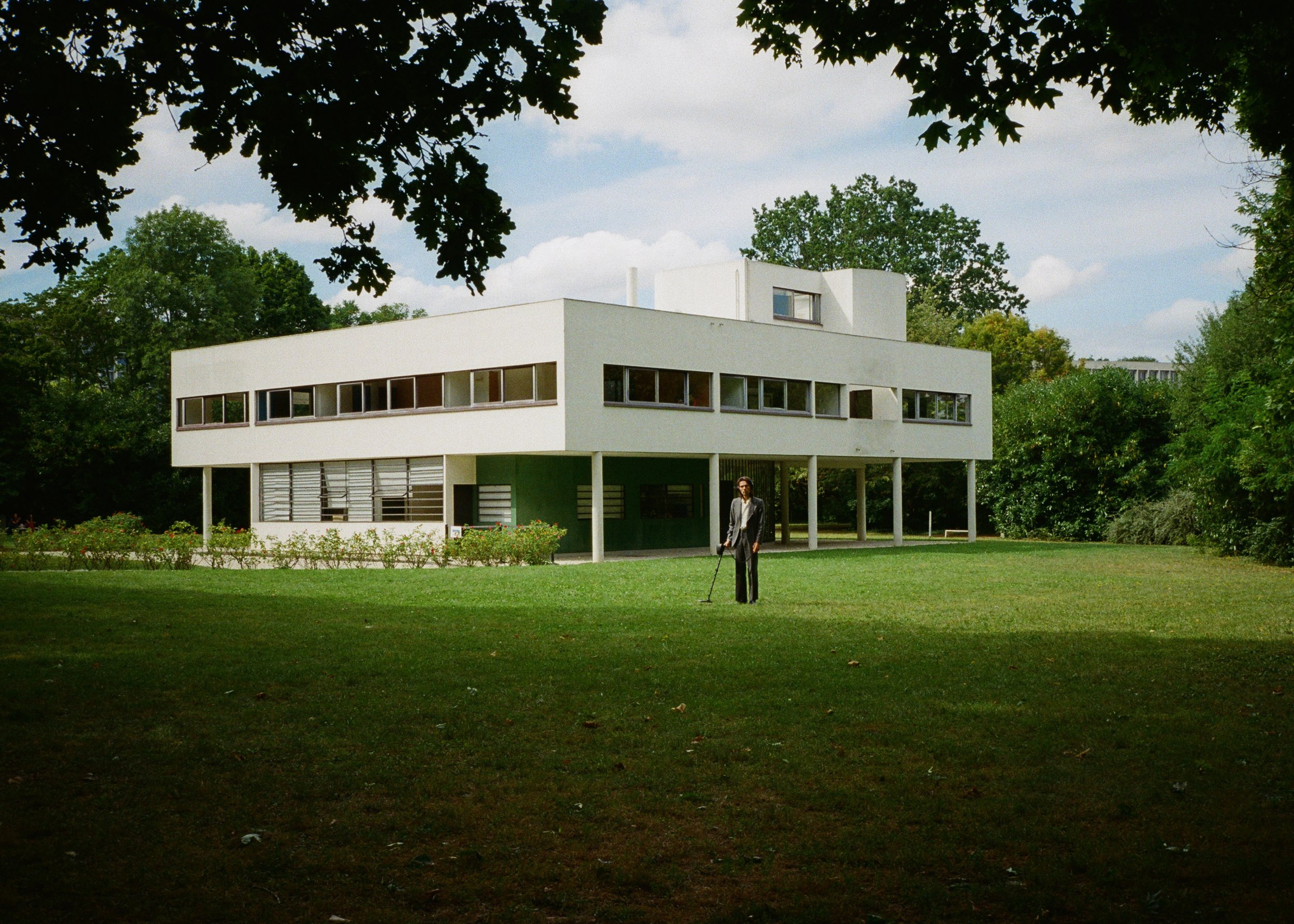Q&A: Cosmic Crooner Never Stops Looking for Inspiration in “Reflexopolis”
REVEALING A TENDER LOVE LETTER DEDICATED TO MUSIC’S PAST — Cosmic Crooner sweetly adds to the psychedelic ’70s orb with a longing for delicate pecking upon retro-pop fusion that Bowie was once known for. Now, the world seems to orbit back into motion with Crooner’s newest release, “Reflexopolis.” Instinctively, Crooner nestles upon the whimsical side of his craft, detaching from the 20-something-year-old urge to stay relevant; instead, he places his bets on a colorful world, lyrically and visually.
“Reflexopolis” comes together with the help of 16mm film, capturing the minimalist view of nature and the architecture portrayed in the video. Sonically, the track comes to life with the help of cinematic melodies and larger-than-life colors that swirl into every portrait shot in the short film.
We chatted with the Amsterdam-based artist on all things “Reflexopolis,” speaking on the importance of creating a world of your own, the intention of using 16mm film, and the stories that lie beneath the video itself.
LUNA: The setting seems to shift into different portals of stories, and the imagery in the shots really portray that. Was there a specific storyline you were trying to capture with “Reflexopolis”?
CROONER: While writing this song, I took inspiration from different artists and movies I was enjoying at the time. The song is partially about this process of finding and searching for inspiration. It’s a reflective and cheerful song.
For the video, we wanted to show this process of looking for inspiration. It also directly shows some of my direct inspirations like architecture. Furthermore, I like music and films to take me to a different place. “Reflexopolis” as a title is a combination between the classic movie Metropolis and “reflection.” For the video, we created the place “Reflexopolis” a place to reflect and a place to look for inspiration.
LUNA: I'm curious about the intention and inspiration behind only using 16mm film. The film for “Reflexopolis” creates this beautiful, nostalgic-like feeling to the story. Was there a deeper reason for using 16mm?
CROONER: First of all, I think film has a certain quality [that] you can’t recreate with digital cameras. Also, I feel very inspired by ’60s and ’70s music and cinema, especially the French director Jean-Luc Godard, who is a favorite of mine. The movies from this era were, of course, all shot on film. So by using 16mm stock, the inspirations I sing about would look more authentic.
Another thing I love about shooting analogue is that you have to be careful with your shots, ’cause you only have a certain amount of film. It almost feels like a gig that way.
LUNA: Walk me through some of the BTS photos — can you share why these locations were so important, or what stories are behind it?
CROONER: I wanted to film at Les Espaces d’Abraxas (Noisy-le-Grand, Paris) for quite a while. It’s a monumental apartment complex designed by the architect Ricardo Bofill, whose work I admire. Since his creations have a certain dystopian value, “Reflexopolispolis” seemed a good fit to finally shoot at this place. While walking around the area we stumbled upon a parking lot, which looked like a crumbled spaceship. It wasn’t the plan to film here, but it was so beautiful that I had to shake the tambourine.
Another important location was Axe Majeur (also designed by Ricardo Bofill). When I found
out about this location, I instantly imagined [that] a dolly zoom would look terrific. [It was] famously used in Jaws and Goodfellas, but personally I really like the way it portrays the story in the movie La Haine, a movie which also features the outskirts of Paris. It was of course more difficult than expected, and we prepared this shot in the middle of the night in order to shoot at dawn. It was tricky, but I’m very happy with the result. I feel blessed that the people I work with have such an amount of knowledge.
Barry Lyndon was another big inspiration while shooting the video. The countryside of Paris was exactly the right place to find hedges and green fields.
LUNA: The color scheme is very earthy in its entirety. Was that on purpose? What were you going for?
CROONER: Yes, everything was chosen carefully. In the video I’m on a quest for inspiration. The “inspiration” was portrayed by the primary colors. The buildings and nature needed to have a natural color scheme in order to make the primary colors (inspiration) pop.
LUNA: You have such a unique knack for bringing out the 1970s retro-pop tones, and not just in the music, but with the use of the “Reflexopolis” video as well. Are you inspired by anyone or artist in particular?
CROONER: I’m of course inspired by many artists. As for this song, I felt very inspired by George Harrison. I really love his guitar style and his chord progressions. I also became very intrigued by the way Nouvelle Vague movies tell their stories. I think it’s so refreshing. It relates a lot to the way I write my lyrics. After the discovery of Nouvelle Vague, it gave me so many visual ideas. But mostly, I think — like I mentioned before — the song is about taking inspiration from different artists and elaborating about that in the same song.
LUNA: What do you hope fans and listeners take away from this single/video? Is there an underlying message?
CROONER: I hope people enjoy the video and the music as much as I do. Being inspired is very important and a somehow funny and great feeling. I hope this song/video causes people to never stop looking for inspiration.








